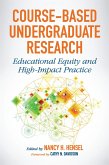Squash and Stretch: This principle involves exaggerating the shape and form of an object to convey weight, impact, and flexibility. It adds life and vitality to the animation by creating a sense of anticipation and impact.
Timing and Spacing: The timing and spacing of keyframes in animation play a crucial role in creating realistic and believable movement. Understanding the principles of timing and spacing helps in achieving the desired effect and conveying the intended emotion or action.
Arcs: Natural movements often follow arched or curved paths rather than straight lines. Incorporating arcs in animation helps in creating fluid and organic movements, adding realism and naturalness to the motion.
Anticipation: Anticipation is used to prepare the audience for an upcoming action or movement. It involves a brief motion in the opposite direction before the primary action, adding weight and impact to the movement.
Follow-through and Overlapping Action: When an object or character comes to a stop after a movement, certain parts continue to move briefly due to inertia. This follow-through action, combined with overlapping movements of different parts of the body, adds to the naturalness and realism of the animation.
Secondary Action: Secondary actions are additional movements that enhance the primary action and contribute to the overall storytelling. They can be used to convey emotions, add detail, or create a sense of depth and complexity.
Staging: Staging refers to the arrangement of elements within a scene to convey a clear message or focal point. Effective staging ensures that the audience understands the main action or idea without confusion.
Exaggeration: Exaggeration is a technique used to emphasize and heighten actions, expressions, or movements. It adds interest, impact, and appeal to the animation, making it more engaging for the audience.
Appeal: Creating appealing characters and designs is essential in animation. The design of characters, their expressions, and personalities should capture the attention and interest of the audience, making them relatable and memorable.
Storytelling and Posing: Animation is a powerful medium for storytelling. Creating strong poses and compositions helps in conveying the character's emotions, intentions, and actions effectively.
Remember that mastering these tricks and techniques takes time and practice. Studying animation principles, observing real-life movements, and analyzing animations from experienced animators can greatly enhance your skills and understanding of the art form.
Dieser Download kann aus rechtlichen Gründen nur mit Rechnungsadresse in A, B, CY, CZ, D, DK, EW, E, FIN, F, GR, H, IRL, I, LT, L, LR, M, NL, PL, P, R, S, SLO, SK ausgeliefert werden.
Hinweis: Dieser Artikel kann nur an eine deutsche Lieferadresse ausgeliefert werden.









